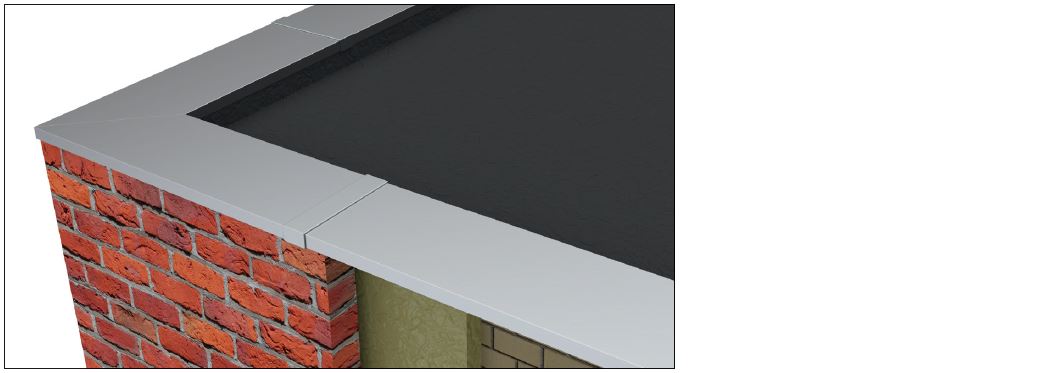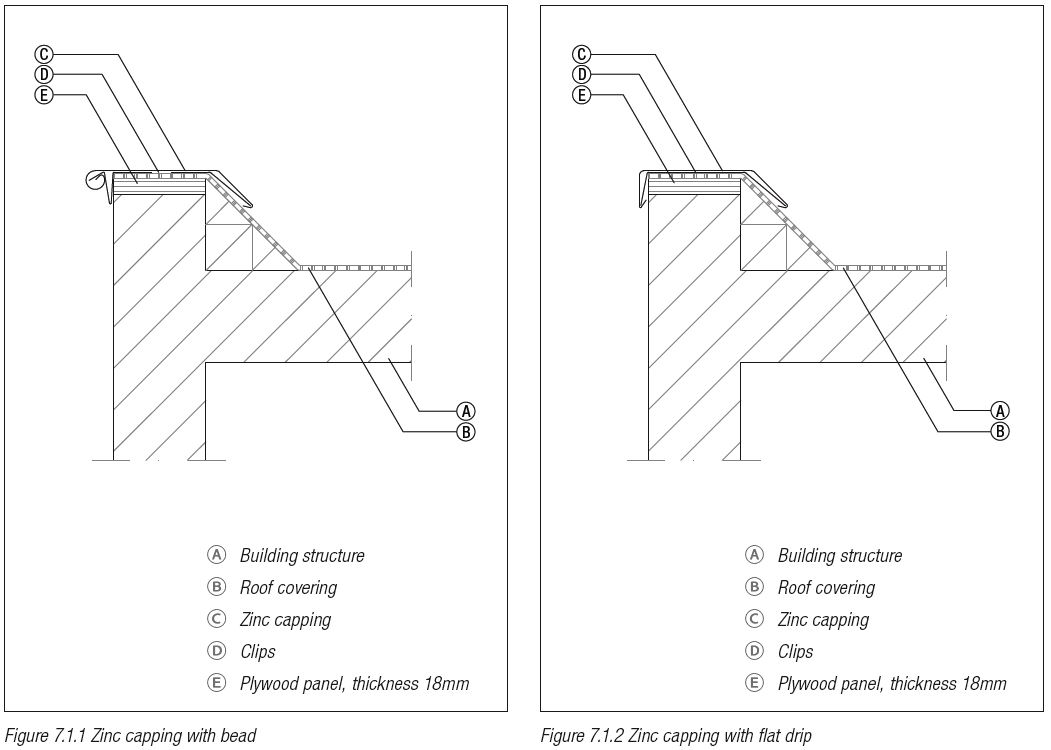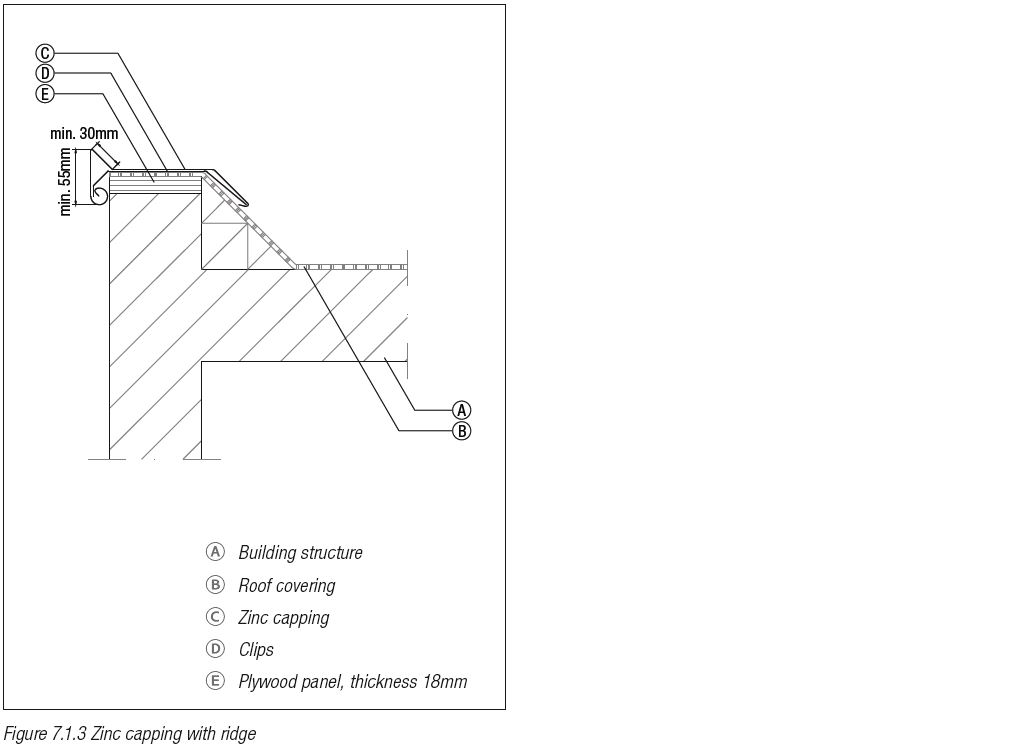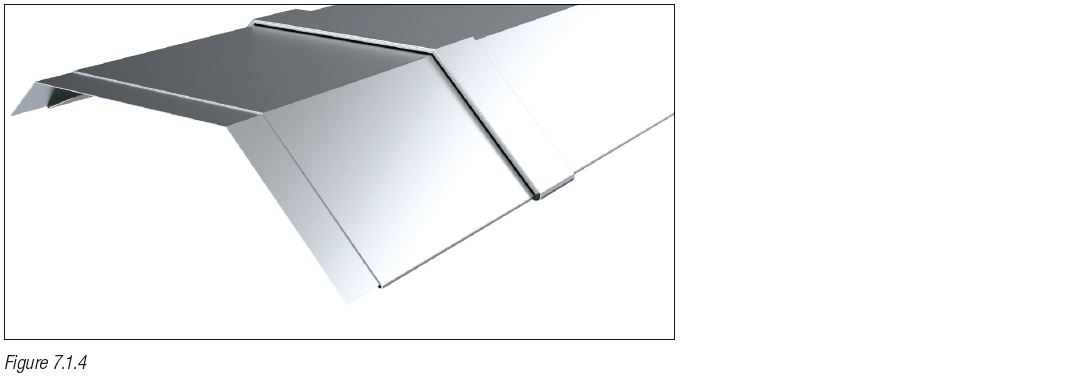Zinc cappings
Zinc cappings made from NedZink material can be applied successfully as a covering to the roof edge of flat roofs that are covered with bituminous, plastic or rubber material, whether or not with gravel or terrace tiles as a load. These roofing materials can cause problems on the roof edge. This is the result of a number of factors:
- Effect of sunlight (heat and U.V. rays)
- Differences in expansions between trim, substructure and covering
- Bulging of bitumen due to a low softening point
- Loosing of the glued edge of the roof trim
- Mechanical damage of the roof edge
These harmful effects can be avoided by fully covering the edge of the roof with a titanium zinc capping. If NedZink material is used and applied with the necessary craftsmanship, the expected service life is 50 years or longer.
→ Click here to view the additional information on zinc cappings → Hide information about zinc cappings
Construction details for the zinc capping
The zinc capping is designed according to the example figures 7.1.1, 7.1.2 and 7.1.3. The upper surface of the zinc capping must slope down in the direction of
the roof or must be provided with a rain ridge, see figure 7.1.3.
A number of important construction details;
- The upper surface of the zinc capping must slope down in the direction of the roof or must be provided with a rain ridge, see figure 7.1.3.
- The zinc capping is attached by means of zinc clips of a width of at least 80 mm that are fastened to the edge of the roof with at least 2 screws or zinc nails. The distance between the clips amounts to a maximum of 1 meter.
- The material for the clips must be at least 0.80 mm thick.
- The use of stainless steel or galvanised steel clips is recommended for zinc cappings with a long sloping part of > 150 mm. The same goes for zinc cappings with a developed width as from 450/500 mm, by which the zinc capping can be regarded as a roof bay. The number of clips must be adapted to this.
- The zinc cappings must be soldered to one another up to a maximum of 12 meters length with an overlap of at least 15 mm. After every 12 meters an expansion sleeve must be fitted at one’s option, see figure 7.1.4.
- The underlying roof covering must be glued over the entire width of the roof edge.
See also:



